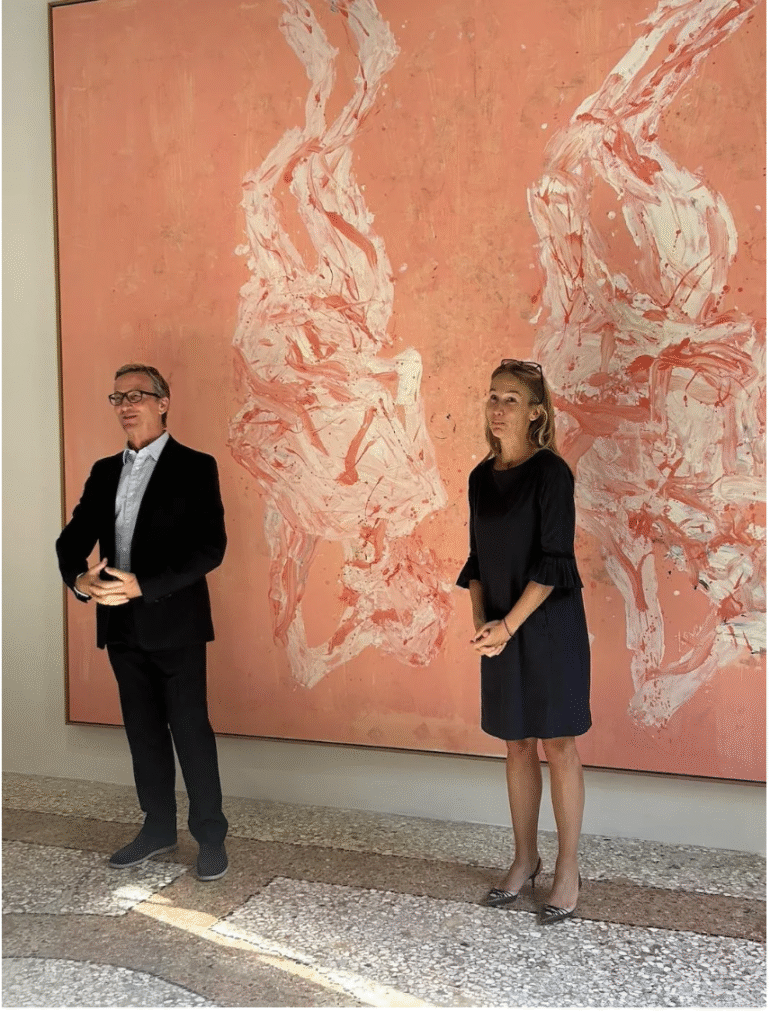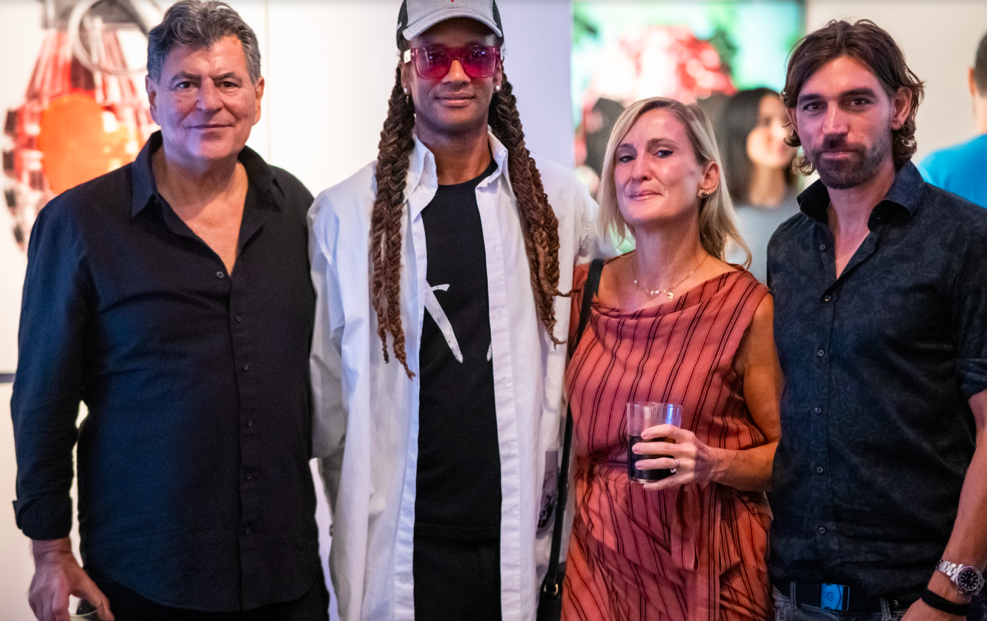International gallerist Thaddaeus Ropac has launched his first Italian gallery in Milan, debuting with L’aurora viene–the first exhibition ever to bring together Georg Baselitz and Lucio Fontana. The show highlights Baselitz’s deep and ongoing dialogue with the pioneering Argentine-Italian artist, offering a historic encounter between two of the most influential figures in modern and contemporary art.
Entitled L’aurora viene, the Milan gallery’s inaugural exhibition pairs the two artists in dialogue in a two-person presentation for the first time, and encompasses paintings and sculptures by Baselitz spanning the past decade, as well as works by Fontana from the 1930s to the 1960s, including the loan of a nucleus of works from the Fondazione Lucio Fontana.
Though the two artists never met, Fontana has played an important role in the work of Baselitz. Baselitz has a studio in Italy, and Fontana lived and worked for most of his life in Milan, where the first exhibition of his works was held in 1931. The exhibited works by Baselitz include a new monumental bronze sculpture and recent paintings with empty, unlit centres or suspended figures who seem to surge forth from dark grounds, echoing Fontana’s exploration of what lies beyond the canvas.
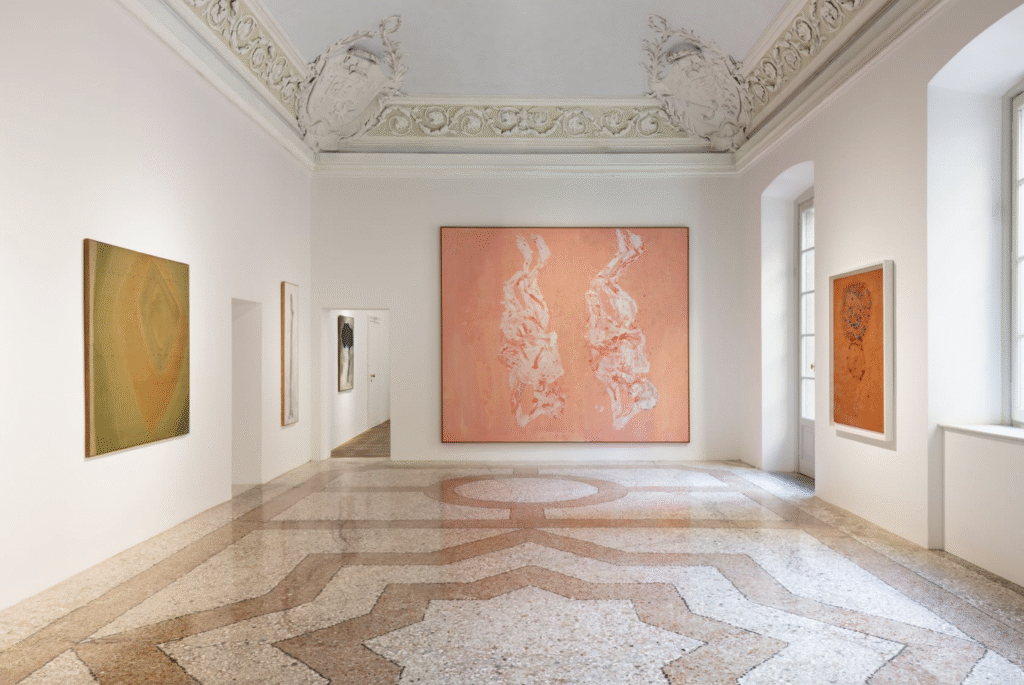
Baselitz’s recent portraits of spectral figures in pallid colours, hanging upside-down in the pictorial space, were inspired by a dream in which he saw his own skin ‘”torn down the middle, split in two“. Over the course of the last decade, he has returned almost compulsively to the motif. His light, sometimes effervescent treatment of paint suggests the ageing body, while its composition – emerging onto the monochrome ground as if from behind – recalls Fontana’s ploughing of the depths of the canvas in search of a new artistic dimension.
“I wanted an apparition”, Baselitz says, “something that appears out of the depth”. As critic Steven Henry Madoff wrote: “There is a hiss in these late paintings, whose provenance is in what Achille Bonito Oliva once called “a splintered, pyrotechnic space,” which presents a formal spatiality that is also psychological’. In the evolution of Baselitz’s new spatiality, as Fabrizio Gazzarri wrote, “A progressive liberation is taking place that jettisons all oppressive and excessive matter […] In this removal of matter, gravity loses direction; the compositional structures break down, taking on a new order that obeys other laws, other potential (cosmic?) dimensions.’”
There is a tangible parallel here with the new laws and dimensions that Fontana, before him, had established in his manifestos spanning the late 1940s and early 1950s, in which he formulated his theories of Demonstrating the development and evolution of this exploration in Fontana’s work, the works on view include ‘Baroque’ sculptures dating from as early as 1937 up to the 1950s, as well as a selection of Concetti spaziali(Spatial Concepts), including iconic Attese(Expectations) works from the 1960s and key examples from the Gessi(Impastos, 1954–58) and Inchiostri (Inks, 1956–59) series, as well as an exceptionally rare Fine di Dio(End of God) from 1963–64.
The gallery’s new Milan space, in the historic Palazzo Belgioioso, designed by Giuseppe Piermarini in 1772, becomes the site for an ‘intellectual confrontation’ between the two artists’ works, which unfolds across ideas of space, language, objecthood and the body, and, fundamentally, a search for origination, both of artistic form and of the universe.
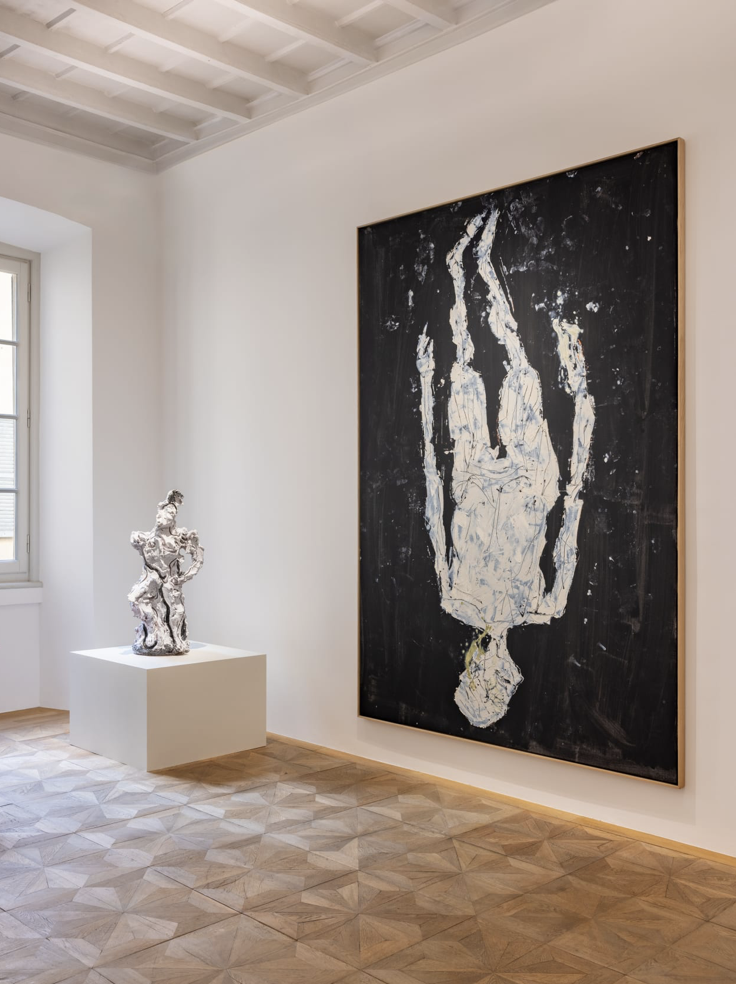
Interpretation is of no use to any artist. Now, at my age, it’s more of an intellectual confrontation, without any dependence.” Georg Baselitz
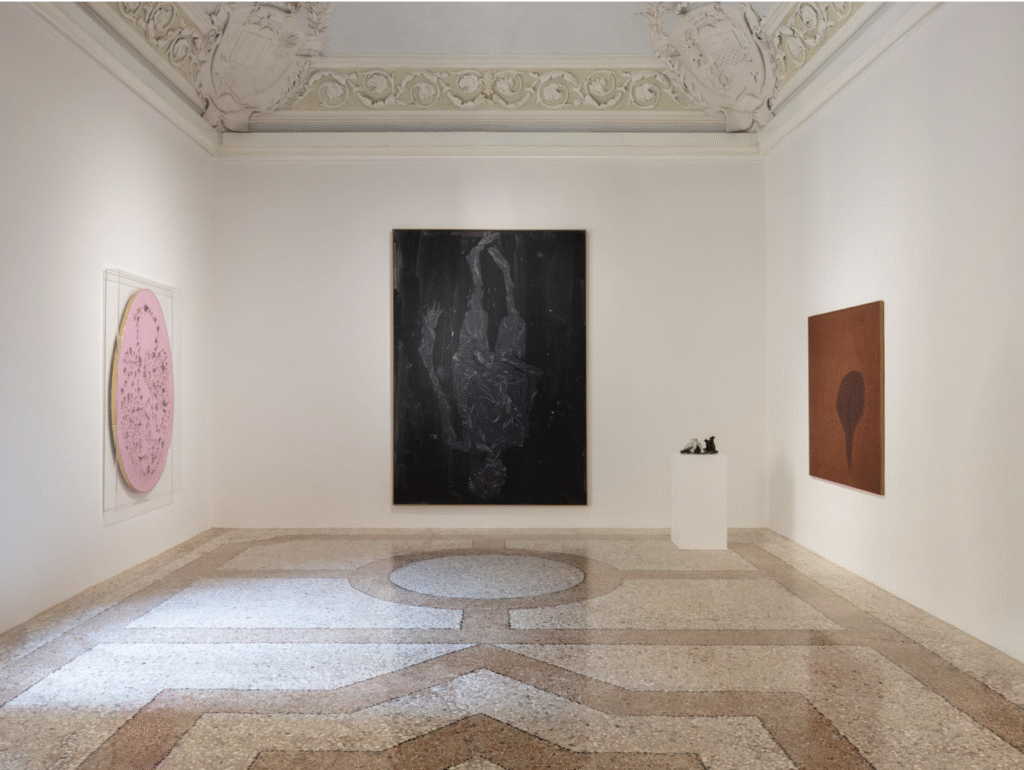
The presentation of works by Lucio Fontana alongside paintings by Georg Baselitz sets up a dialogue that is both coherent and surprising. Allowing for an in-depth exploration of the ideas artmaking is founded on, it showcases a shared imagination and sensibility, expressed through different means. The project demonstrates how alive and relevant Fontana’s work remains today. The works by Baselitz exhibited in Milan – some of which even reference Fontana in their titles – have been extraordinary allies in this regard.
Baselitz’s recent portraits of spectral figures in pallid colours, hanging upside-down in the pictorial space, were inspired by a dream in which he saw his own skin ‘torn down the middle, split in two’. Over the course of the last decade, he has returned almost compulsively to the motif.
His light, sometimes effervescent treatment of paint suggests the ageing body, while its composition – emerging onto the monochrome ground as if from behind – recalls Fontana’s ploughing of the depths of the canvas in search of a new artistic dimension. “I wanted an apparition“, Baselitz says, “something that appears out of the depth”.
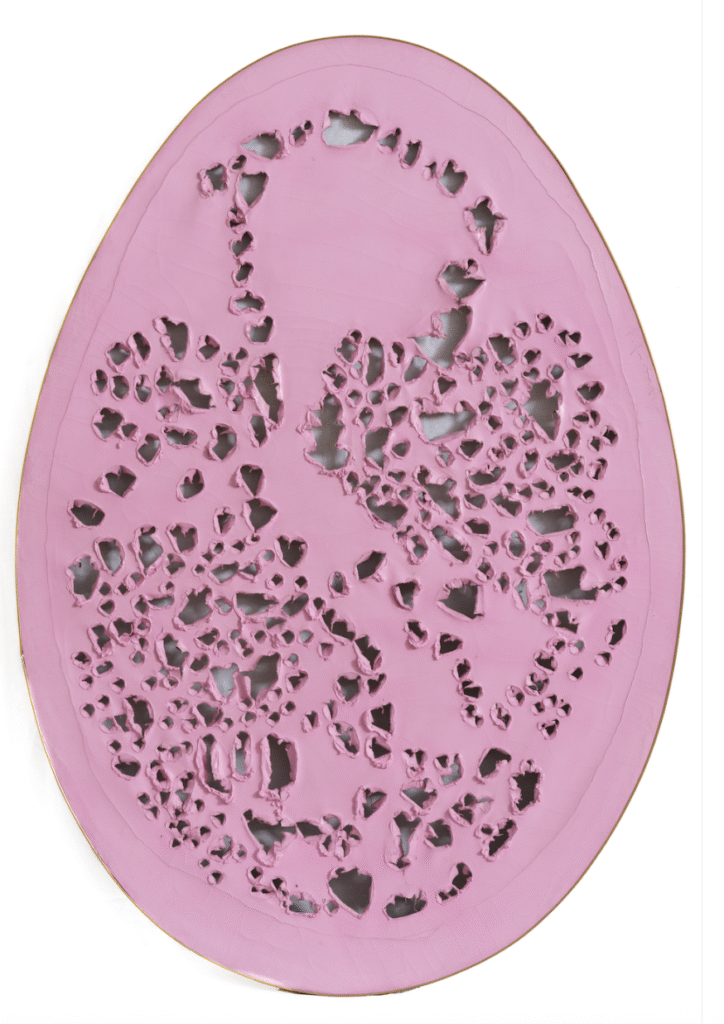
© FONDAZIONE LUCIO FONTANA, MILAN O , BY SIAE 2025 COURTESY PRIVATE COLLECTION & THADDAEUS ROPAC GALLERY.
Baselitz and Fontana seem to interact and converse at several levels across the exhibition, but Barbero posits that the two artists, ultimately, are bound not by “a formal proximity nor an affinity of language, but a shared tension. In other words, the idea that art does not represent but announces, that it does not describe but evokes, that it is first and foremost an act of opening up towards the origin.”
Brought together, they enter into a dialogue that activates the latent sense of the union of the cosmic and the bodily that lies just under the surface in both artists’ works, centred around the infinite dark matter they both explore. The slash was the aurora of Baselitz’s engagement with Fontana: a starting point for a dialogue that runs much deeper.
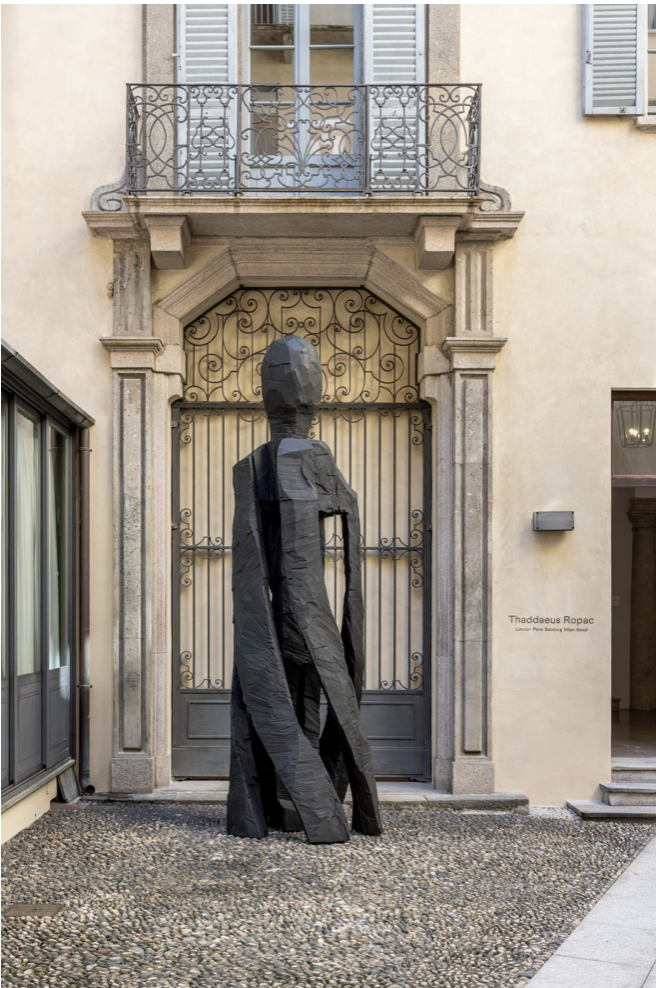
Georg Baselitz & Lucio Fontana L’aurora viene is at Thaddaeus Ropac Milan until 21st November, 2025.
All images by Roberto Marossi. Courtesy of Thaddaeus Ropac Gallery.


